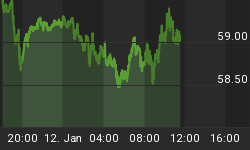Some $3 billion in U.S. exports of 128 products to China will be affected by Beijing’s retaliatory move against Trump’s $50-billion tariff threat.
Effective today, China has raised import duties on U.S. pork, fruit and other products, with the highest additional tariffs—25 percent—on U.S. scrap aluminum and frozen pork.
Dozens of other U.S. food products, including fresh and dried fruits and wine have been slapped with an additional 15-percent tariff. Rolled steel bars have also seen a 15-percent import duty hike.
The move comes amid escalating tensions that have seen both carrots and sticks employed as negotiating tactics.
Threats and concrete actions have been made, while at the same time, China and the U.S. have opened talks about possible settlements to the trade dispute that could result in China opening its market to more U.S. companies.
The overriding sentiment is that while China has more to lose in a trade war because it runs a surplus with the U.S., there would be no winner if this escalates to a full-blown trade war.
China, as such, is perceived as reluctant to escalate trade disputes, and its move Monday to slap additional import duties on 128 U.S. products is seen as a fairly measured response that saves face in Beijing but is not a war cry.
The products on China’s tariff hit list comprise only a miniscule portion of U.S.-China trade, which is in the hundreds of billions annually.
Notably, soybeans were left off the list even though they represent a major U.S. export to China, amounting to $12 billion last year alone. Earlier this month, China had threatened to take moves against this particular U.S. export.
Retaliating against soybean shipments could have a big impact on both sides. China relies heavily on the U.S. for the product, which is used as an animal feed. China buys 60 percent of the soybeans traded worldwide and over 30 percent of that comes from the U.S. Related: How The Federal Reserve Drives The Economy
In the meantime, however, those products that are on the Chinese list will deal a fair blow to the supply side. According to the U.S. National Pork Producers Council, the industry sold $1.1 billion in products in 2017 to China, its third-largest export market.
According to the Associated Press, U.S. farmers shipped the Chinese almost $20 billion worth of food in 2017. One of the hardest hit U.S. states will be Iowa—the top pork producer, and a state where 10 percent of the farms were predicted to fail this year.
The Trump administration has announced a suite of tariffs that could affect $50-$60 billion worth of Chinese products as a form of pressure designed to hit back at Chinese intellectual property theft.
Now the markets are waiting for Washington detailed list of what will likely be high-tech products from China that will face new tariffs by April 6.
Chinese next retaliatory move after that could be to punish American firms that rely on Chinese manufacturing to keep their costs low, as well as a possible increase in tariffs on vehicles and planes.
By Jan Bauer for Safehaven.com
More Top Reads From Safehaven.com:

















